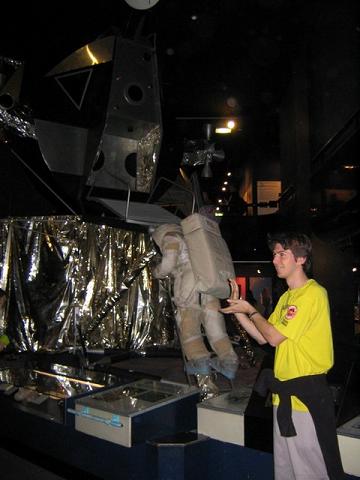This is according to a study conducted by researchers at the Technion in several science museums in the north and center of the country
The Technion

of learning in such an environment. "In the classroom, the teachers have to teach a list of content and skills, in the museum school students' visits to nature and science museums do not achieve their main goal: enriching the students' scientific knowledge and encouraging their curiosity about science. This is according to a comprehensive study, conducted by a team of researchers from the Technion's Department of Technology and Science Education led by Dr. Tali Tal. According to her, the research shows that the educational visit to the Science and Nature Museum was conducted according to an old and unacceptable model, according to which the student is a "jug," into which the guide is supposed to "pour" knowledge. This, instead of stimulating the student's curiosity and encouraging his interest in the scientific field.
The study included five nature and science museums in the Tel Aviv area and northern Israel, which are visited by tens of thousands of students each year. "In the research, which was funded by the National Science Foundation, teachers, students and guides at the museums were examined, during and after the visit," says Dr. Tal. "Data was collected by video observations of each visit, interviews and questionnaires".
The researchers found that the training and activities in the museums studied are formal and sometimes even more rigid than in the classroom. "We found long lectures and an attempt to impart a vast amount of scientific knowledge in short periods of time," says Dr. Tal. "We found that little use was made of the exhibition itself (there is almost no use or viewing of the exhibits), the students have few choices and little attention is given to the possibility of social interaction, which promotes learning in a non-classroom environment."
The Technion researchers also found that most of the scientific concepts presented by the museum guides to the students were partially explained or not explained at all. The researchers also analyzed the questions asked by the students and revealed that a significant number of them were simple questions that did not require thinking.
Another aspect that was investigated was the participation of the teachers and their involvement in the visit. In one of the museums included in the study, a difference was found between the involvement of the teachers from the elementary schools and the involvement of the secondary school teachers. Most of the teachers from the elementary schools are almost never involved in the visit: neither in the planning, nor in the implementation, nor in the summary of the school. "We found passive teachers, who see their main role in the organization of discipline," says Dr. Tal. "In many cases, the visit to the museum was not planned at all by the teacher, and he was only tasked with accompanying the class. On the other hand, in the secondary schools, the teachers initiate the visit in the context of the scientific topic studied at school, and therefore they are also more active in the visit itself."
According to the Technion researchers, the lack of understanding originates from both sides. In the formal training of the teacher, there is almost no reference to learning outside the classroom, and in terms of the museums - most of them have not created an educational concept for themselves, placing their unique environment at the center, and have not defined what the meaning of teaching in museums is. Also, there is no organized training in Israel for teaching in informal institutions such as museums, nature centers, etc.
The Technion researchers recommend training both the teachers and the museum staff to understand the educational significance of learning and teaching outside the classroom, to teach the special characteristics of teaching in an extra-classroom environment, and to emphasize the different outputs. They need to stimulate curiosity and encourage continuous learning throughout life," explains D. R. Tal and recommends constant learning and repeated visits to science and nature museums.
